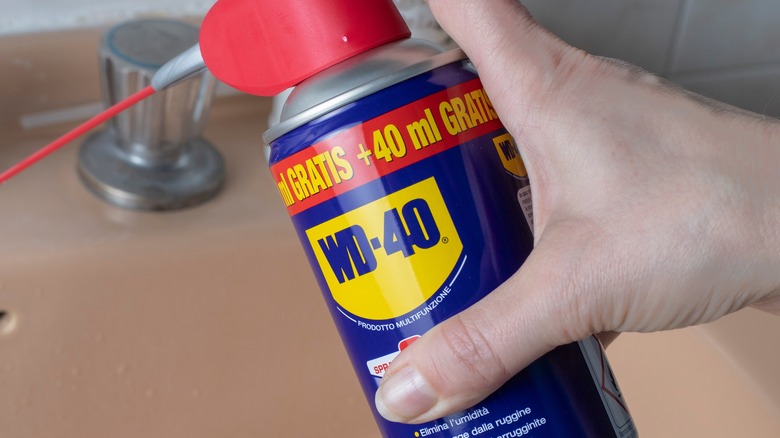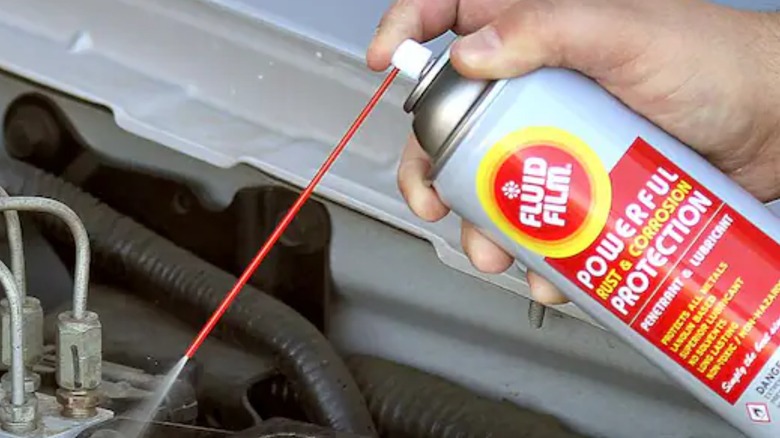WD-40 Vs Fluid Film: Which Is Right For Your Project?
Whether you're a general handyman, mechanic, or a regular do-it-yourselfer, odds are you have a lot of useful tools to help you out. While there's likely an arsenal of tools at your fingertips, like wrenches, screwdrivers, and power tools — not to mention tools you likely never use and should just get rid of — there's more to completing repairs around the house than just those. There are also cleaning and repair products that you'd likely find are worth keeping stocked at all times.
Depending on the nature of your work, there are specific products you probably find yourself buying and using often. However, there are a handful that, regardless of the jobs you tackle, you'll want to have around. Right at the top of the list is the rocket science solution found in almost every garage, multi-use WD-40, as it's one of the most versatile and helpful products on the market today. There's also Fluid Film, which works similarly to WD-40 and is quite a helpful product to have on hand in its own right. Despite their similarities, though, these two are actually quite different in some areas.
So, how would you go about determining if WD-40 or Fluid Film is best for your latest endeavor? Here are the key use cases and limitations of the two products to help you decide.
What to know about WD-40 and Fluid Film
Though WD-40 and Fluid Film are both strong products on their own, in the context of specific jobs, they're not equally helpful. When looking at the WD-40 multi-use product, there's a lot it can handle. It can protect against rust, get stuck parts moving again, and act as a lubricating agent. It can even be used effectively as a cleaner, wiping away grease and grime and shining up stainless steel. At the same time, there are plenty of things you should never use WD-40 on, as it can damage certain materials like rubber and plastic. Also, even though it is advertised as a lubricant, there's debate surrounding its true abilities as such — in this case, silicon spray may be a handier option. Some have found it to work as one just fine for extended periods, while others recall it only providing short-term relief. Thus, using it as a lubricant is up to one's own discretion.
Meanwhile, there's Fluid Film, which is a corrosion preventative that also acts as a lubricant. Much like WD-40, it's not safe for use on rubber, but it's not likely to harm plastic. Where it deviates from WD-40 as well is that it doesn't contain solvents, so it's not susceptible to evaporation or drying out. Instead, it leaves behind a wet, film-like residue that provides long-term protection on effected surfaces. Unfortunately, this quality doesn't make it a great candidate for use as a cleaner, at least compared to WD-40.
With all of that said, if you're looking for long-lasting lubrication and rust protection, Fluid Film is your best bet. On the other hand, WD-40 is the way to go for getting seized parts moving, cleaning, and some amount of lubrication.

